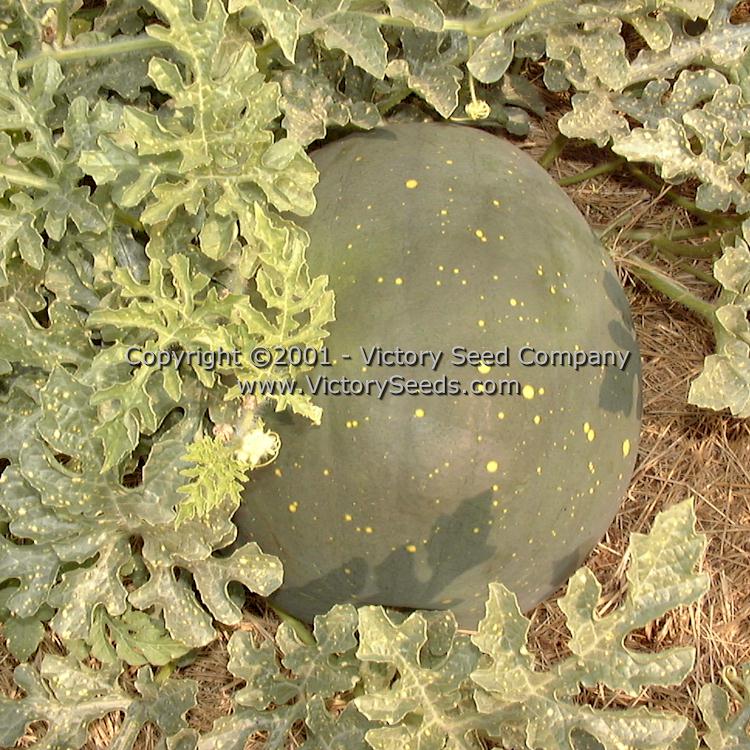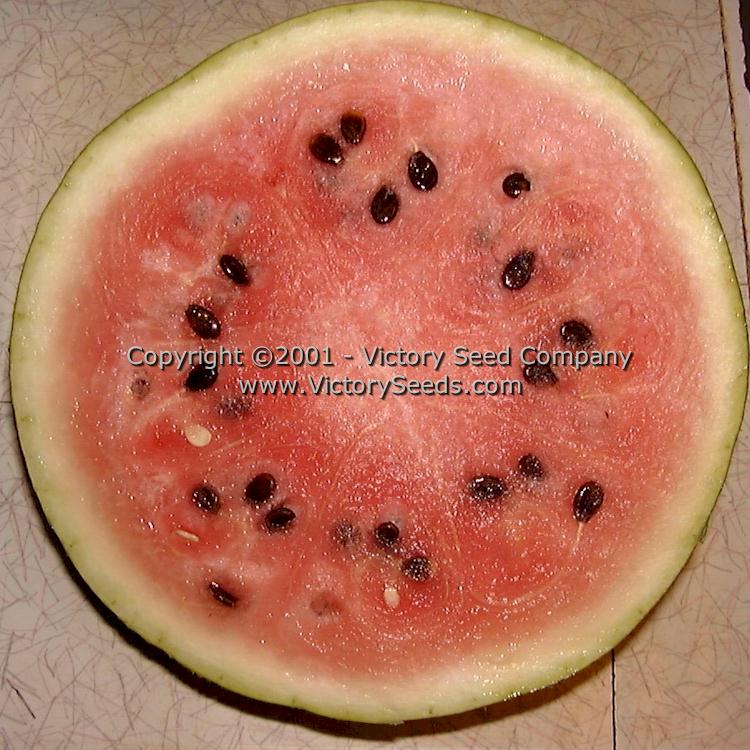Moon and Stars Watermelon
Moon and Stars Watermelon
Regular price
$3.49 USD
Regular price
Sale price
$3.49 USD
Unit price
per
Shipping calculated at checkout.
Couldn't load pickup availability
95 days — The dark green skin of the fruit is wonderfully speckled with bright yellow ranging in size from tiny to silver dollar and sometimes larger, hence the name. The rinds are thick and can be used in pickling recipes. The leaves of the plant are light green with similar yellow speckles. The flesh is pink and very sweet and they average about ten pounds in weight.
Released in 1924 by Peter Henderson & Co. as 'Sun, Moon and Stars' watermelon. Henderson stated that they had originally received seed from, "a practical melon grower of Rocky Ford, Colorado, who fixed the type and named it." The January 1, 1940 edition of Henry Field's publication called "Seed Sense" stated that it was, "A Novelty Worth Planting . . . Quite a curiosity . . . The Quality is good . . ."
Although the variety proved to be well adapted to most regions of the U.S. and gained some degree of popularity, it was no longer commercially available by the 1970s. In about 1977, Kent Whealy, along with members of Seed Savers Exchange, began searching for seed. After a local Missouri television crew interviewed Kent, he received a letter from Merle Van Doren who stated that he had been growing it for years and would provide seed. Since that time, several variants have become available. Each packet contains two grams, which is approximately 20 seeds.
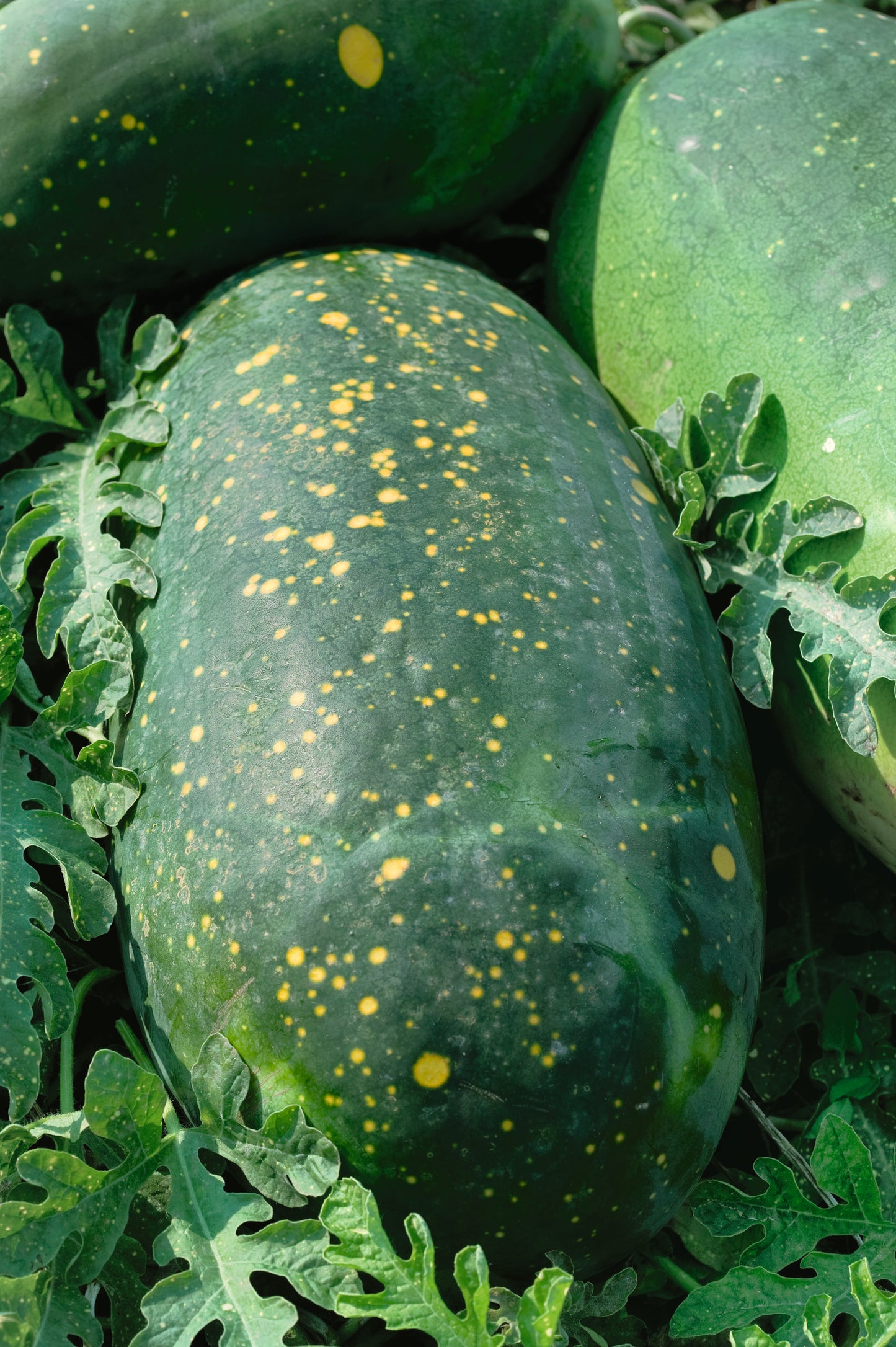
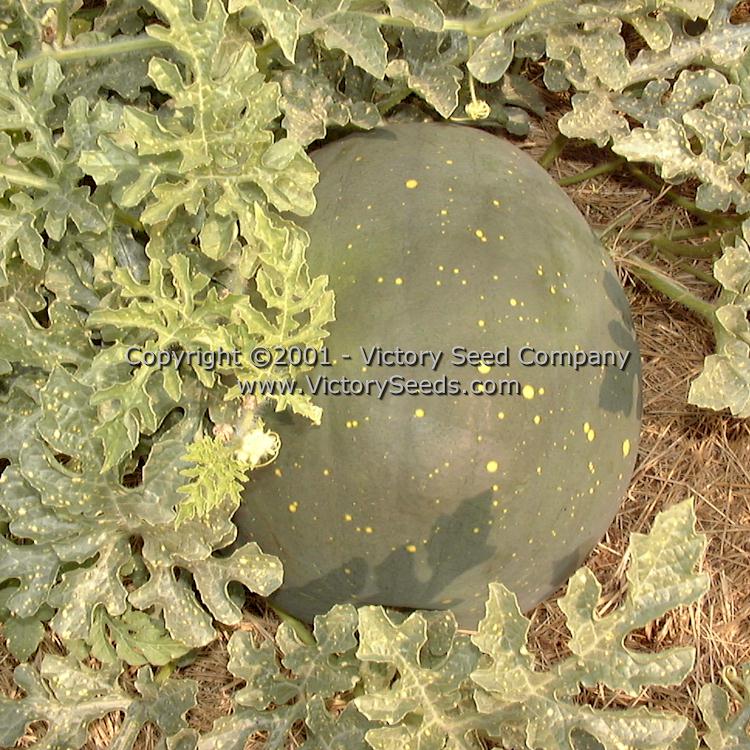
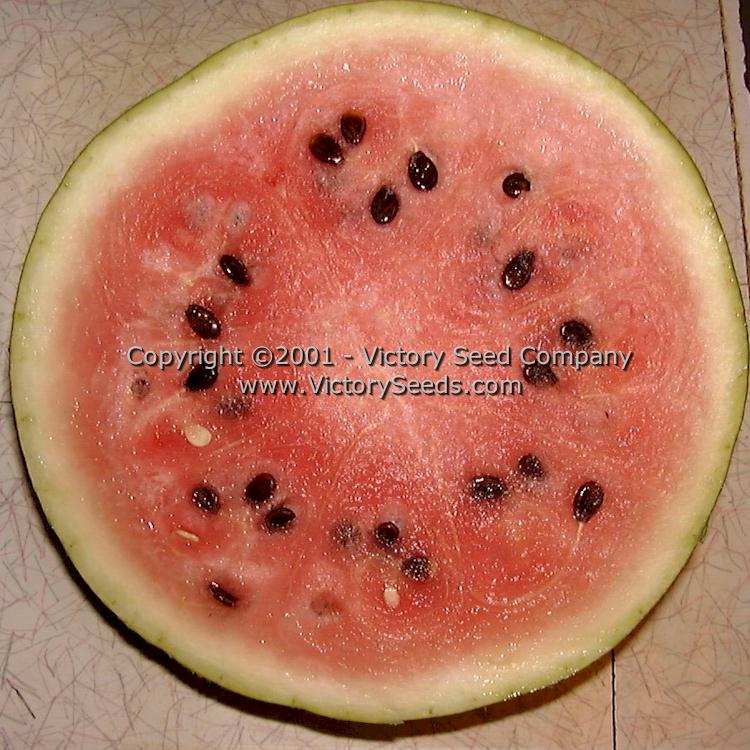
Planting Instructions:
The seeds can be directly sown in spring after the soil has warmed or started indoors four weeks before the last expected frost. Indoors, plant two to three seeds per pot, ½ inch deep, thinning to the best plant. Do not disturb roots when transplanting.
Outdoors, plant three to four seeds, ½ inch deep, in hills spaced four to six feet apart. Transplant or thin to two plants per hill. Young plants are cold sensitive and some cover protection at nights may be required. Mulch or cultivate to control weeds. Informational Sources:
• Peter Henderson & Company, 1924 Seed Annual, page 47.
• "Seed Saver's Exchange: The First Ten Years - 1975-1985," by Kent Whealy and Arllys Adelmann, ©1986, pages 147-148.
• Henry Field's Seed Sense Magazine, January 1, 1940.
Outdoors, plant three to four seeds, ½ inch deep, in hills spaced four to six feet apart. Transplant or thin to two plants per hill. Young plants are cold sensitive and some cover protection at nights may be required. Mulch or cultivate to control weeds. Informational Sources:
• Peter Henderson & Company, 1924 Seed Annual, page 47.
• "Seed Saver's Exchange: The First Ten Years - 1975-1985," by Kent Whealy and Arllys Adelmann, ©1986, pages 147-148.
• Henry Field's Seed Sense Magazine, January 1, 1940.
Explore our vegetable collections:
[ Artichokes | Asparagus | Beans | Beets | Broccoli | Sorghums | Brussels Sprouts | Cabbage | Cantaloupe | Carrots | Cauliflower | Celery | Collard Greens | Corn | Cucumber | Eggplant | Endives | Gourds | Kale | Kohlrabi | Leeks | Lettuce | Mesclun Mix | Mustard Greens | Okra | Onions | Parsley | Edible Pod Peas | Garden Peas | South Peas | Hot Peppers | Mild Peppers | Pumpkins | Radishes | Rapini | Rhubarb | Salad Greens | Salsify | Summer Squash | Winter Squash | Swiss Chard | Tomatillo | Tomatoes | Dwarf Tomato Project | Turnips | Watermelons ]


